Every year, running up to the 12th day of Rabi’i al-Awal, the third month in the Islamic calendar, the majority of the Muslim world gear up to celebrate Al-Mouled Al-Naby, the Prophet Mohammed’s birthday, in celebrations that sometimes gather over a hundred thousand people. Strings of flashing lights are hung up on mosques, relatives hurriedly arrange who will host the big family get-together, and many reflect on the life lived by the prophet and the lessons they can learn from him.
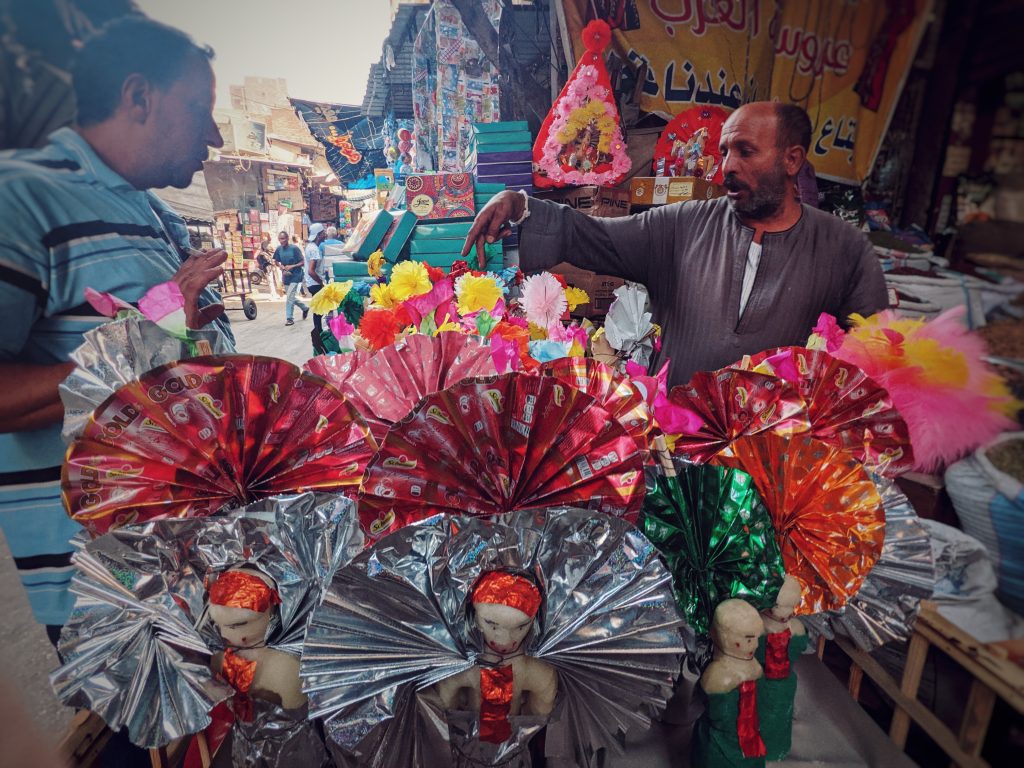
However, each country also has its own traditions and unique ways of celebrating the prophet’s birthday, each of which is part of the wider fabric of a diverse Islamic culture across the world. In Tunisia, kitchens rustle up a special dessert called Assidat Zgougou to exchange with neighbors. In India, relics of the Prophet Mohammed from different mosques are readied to be displayed after the day’s morning prayers. In Egypt, however, a thousand-year-old tradition carries on, as sweet factories pump out sugar dolls depicting a bride, called arouset al-mawlid or bride of the mawlid in English, extravagantly decorated with colorful paper, that is then sold throughout the country. This unique and beautiful tradition has become synonymous with Al-Mouled Al-Naby in Egypt, and images of the bride pop up everywhere in the run-up to the mawlid throughout the country. On television adverts, storefronts, candy, and children’s crafts they bring back from school, the bride is an ever-constant reminder in Egypt of the upcoming festivities.
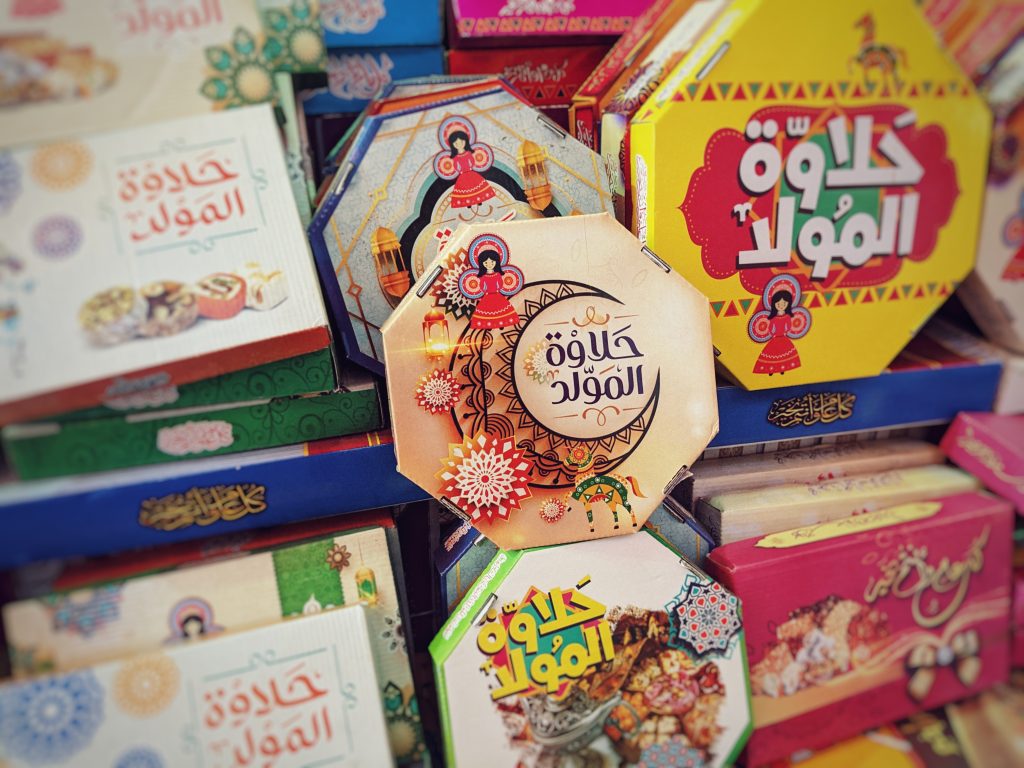
This year is no exception, as preparations for the mawlid that falls on October 8 this year are well underway and the bride of moulid can be seen throughout Cairo. Along the busy Clot Beck Street, which seems to be heaving with people almost constantly as out-of-town commuters rush to and from Ramsis Railway Station are two small roads jettisoning deep into the area of Bab el-Bahr. These two streets, Bab el-Bahr Street and the adjacent Al Shenbaki Street, are the heart and soul of Cairo’s tradition of the arouset al-mawlid. While the area is mostly home to confectionaries and sweet factories that throughout the year make and sell sweets for all matters of celebrations, during Al-Mouled Al-Naby the street is awash with colorful mawlid dolls, both made out of plastic and sugar that line the street and entice young children passing through.
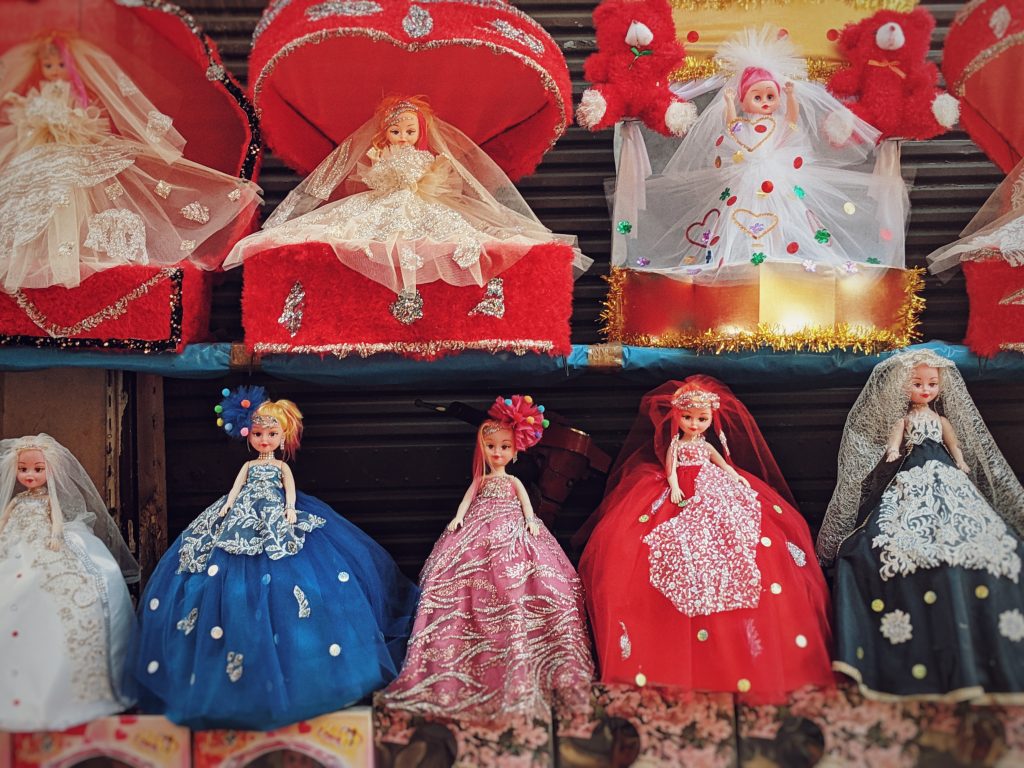
Small shops selling sweets sprawl out into the narrow street, leaving almost the exact space needed for the occasional and unfortunate car that has found itself in this colorful and tight maze. Children stuff bags full of semsemeya, malban, and other traditional Egyptian sweets, whose enthusiasm clearly delights grandmothers.
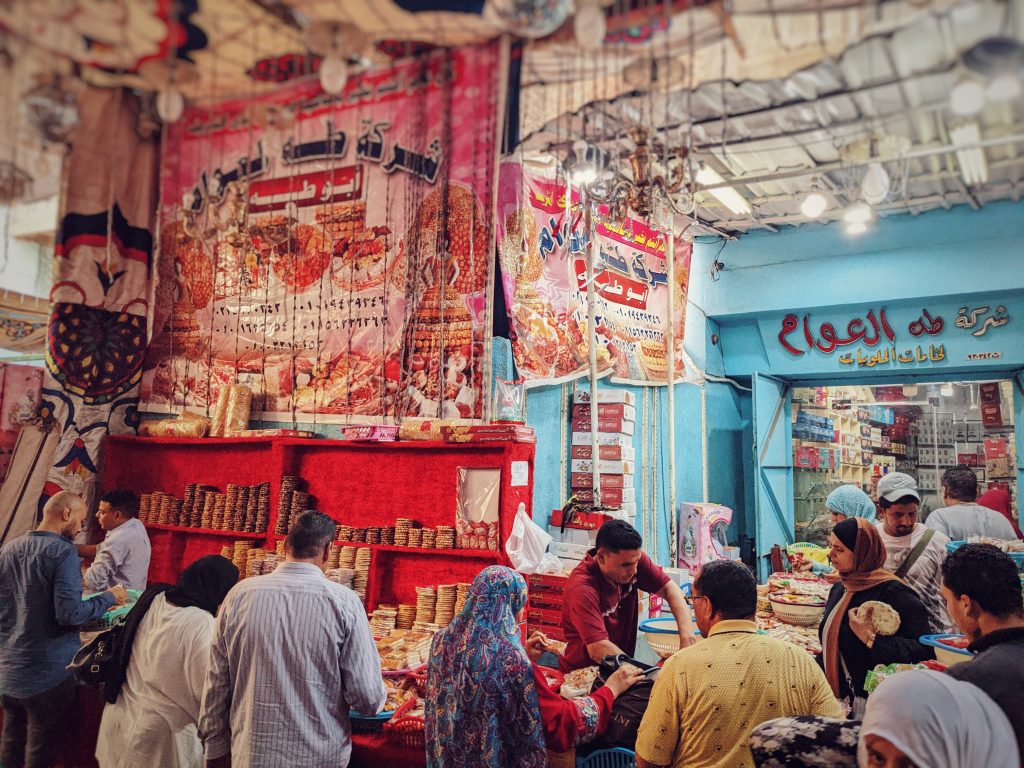
Approaching a man carefully arranging arouset al-mawlid sugar dolls decorated with recycled colored paper and strips of colored string that he was selling, he greeted me enthusiastically, eager to share this particularly Egyptian tradition. Clearly proud of the elaborately decorated dolls he was selling, he described how only sugarcane and water are used to create the sugar dolls with little to no additions. Insisting that I try a bit of the sugar, he asked if I could taste the natural and pure sweetness of the sugary crystal, completely confident of the answer I would give.
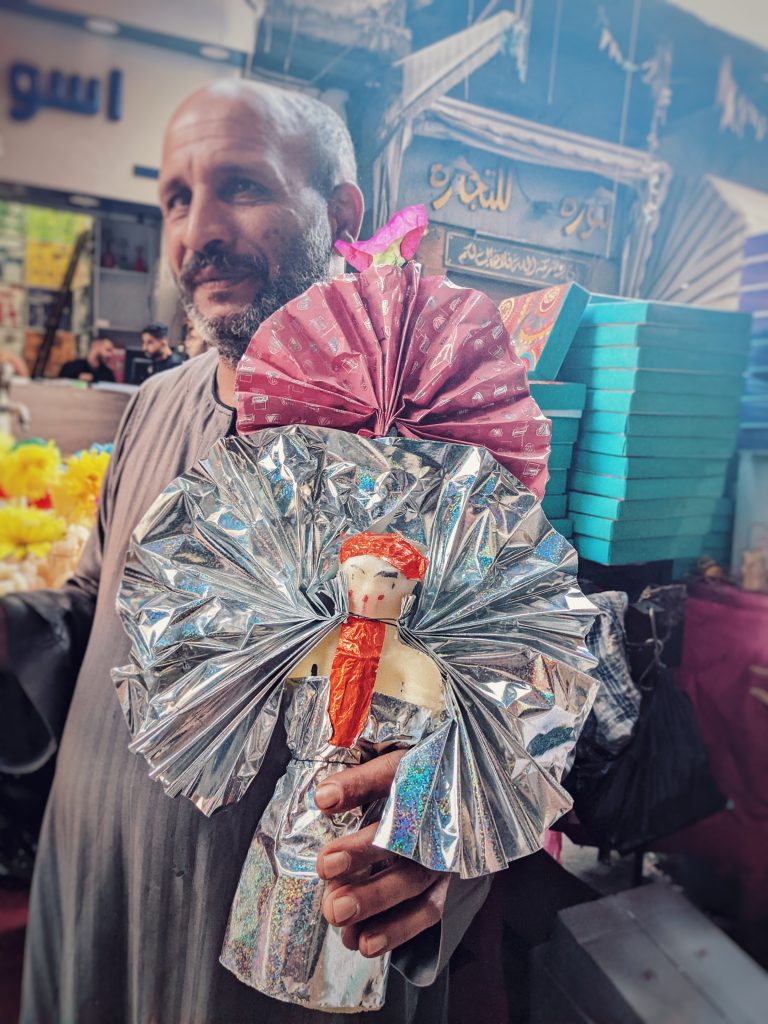
A group of Egyptian schoolgirls, either genuinely interested or eager to eavesdrop on our confusion, asked the man what these decorated sugar dolls were. After explaining to the bemused group of girls, he reflected on this uniquely Egyptian and joyous tradition that seemed to him to be escaping the younger generations of Egyptians, despite having been around for a thousand years. Time is cruel to traditions, and particularly in the 21st century, as the sugar figurines of the arouset al-mawlid have been steadily replaced by decorated plastic dolls or simply boxes of sweets to celebrate the prophet’s birthday. Adamant that I know the story and history of this tradition, he made sure that I got a sense of the glee that these dolls bring to families and their deep roots in Egyptian society all the way back to the time of the Fatimids.
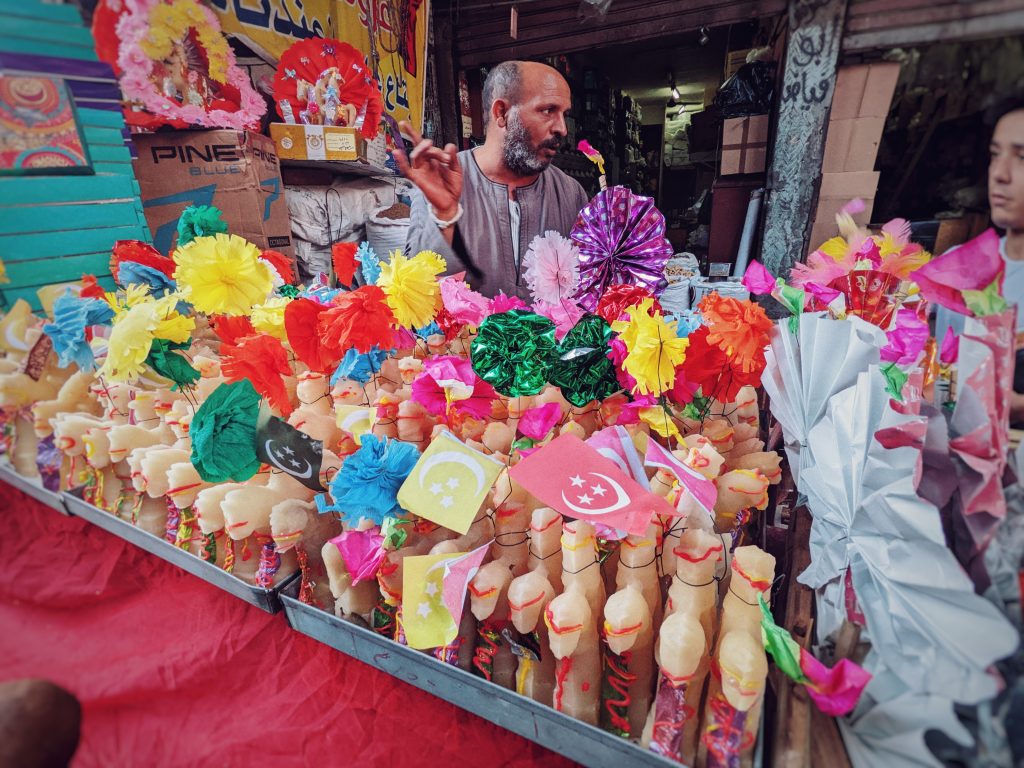
Several theories surround the reason for the appearance and lasting cultural legacy of the arouset al-mawlid dolls, yet it almost seems like the speculation about their origins and the conflicting theories are part of its charm. The most common story involves the Fatimid ruler of Cairo and the notorious caliph Al-Hakim. It’s said in history books and relayed to me by people on the street that Al-Hakim attended the extravagant procession for the mawlid on horseback dressed as a soldier, followed in tow by his wife in a white dress and with a jasmine flower in her crown.
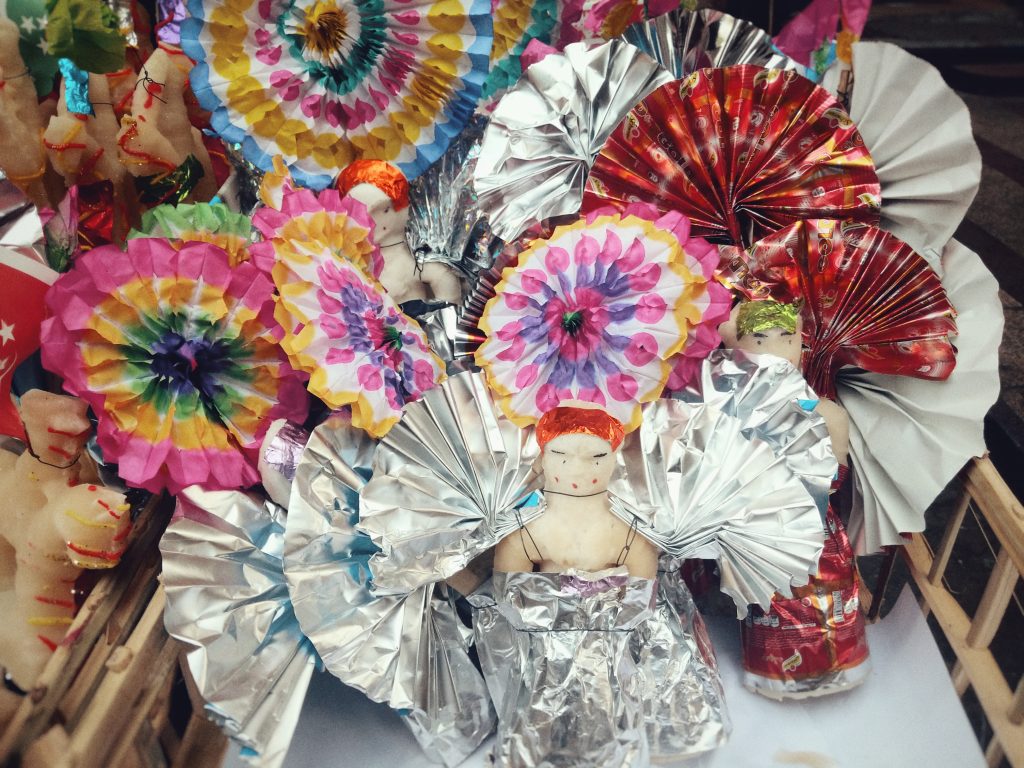
Her dress supposedly astounded the festive onlookers who were astonished by the lavish materials along with her beauty. Capitalizing on this, sweet makers began to make dolls of Al Hakim’s wife. Sugar models of Al Hakim himself on a horse also became part of the tradition and feature prominently along the stalls of Bab el-Bahr, which is known as housan al-mawlid, or horse of the mawlid in English.
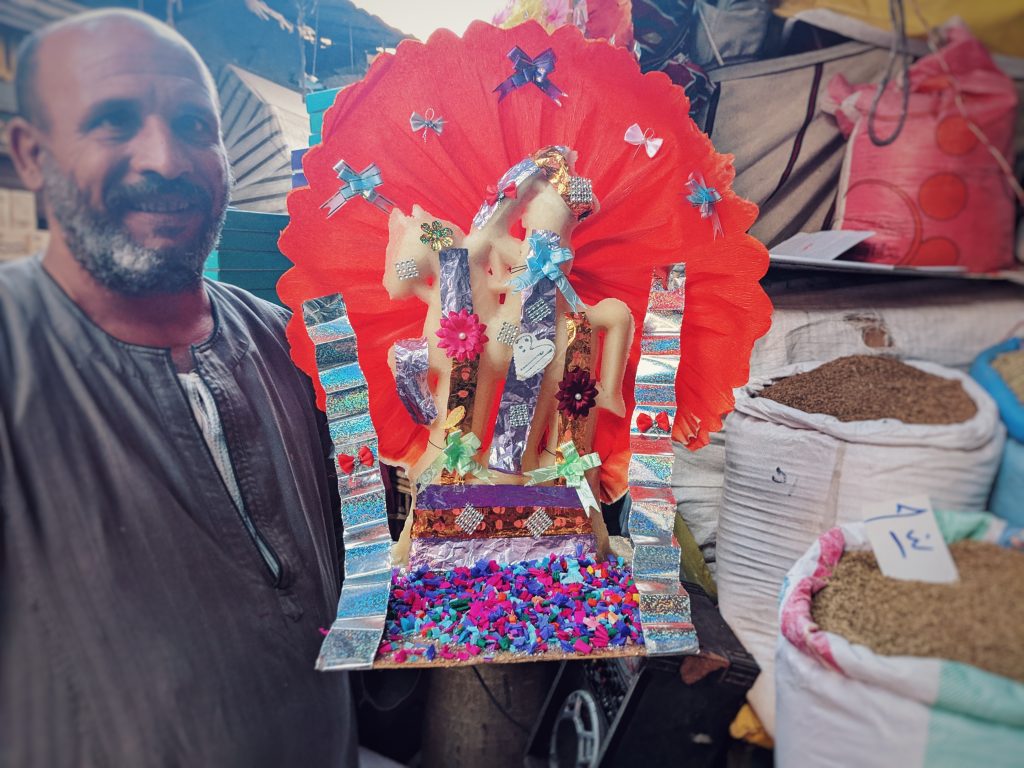
Another theory points that the iconic thousand-year-long tradition of the arouset al-mawlid and housan al-mawlid come from a tradition of giving gifts to soldiers returning from war. The solider on the horse is to represent their bravery and the glamorous bride represents the wife they will almost certainly marry due to the blessings they are owed from risking their lives in battle for a righteous cause.
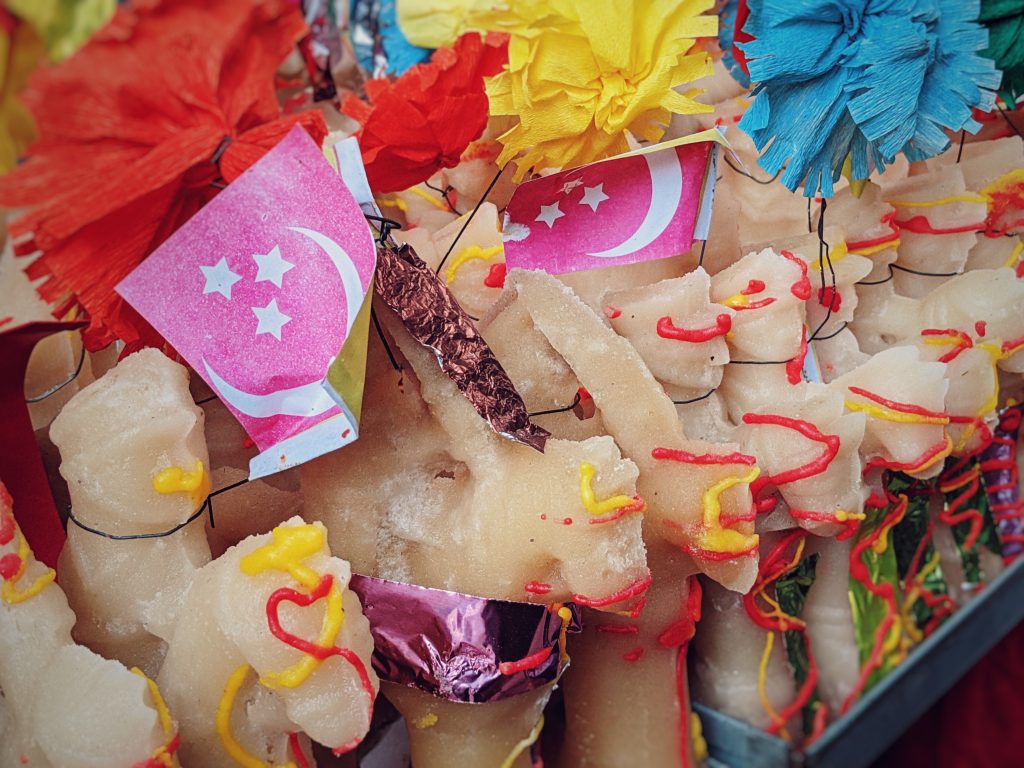
The perseverance of the thousand-year-old tradition of the arouset al-mawlid and its fascinating and uncertain story is part of what makes modern Egypt a unique and beautiful place. Traditions like the doll of the mawlid and the horse of the mawlid, especially when made out of sugar and decorated with colored paper and recycled wrappers, are a joyful and playful part of Egyptian culture that has managed to stand the test of time. While traditions slowly fade away, the enthusiasm of the grandparents buying their grandchildren mawlid dolls and the pride of those who sell the elaborately decorated dolls is a sign that many Egyptians are determined to keep this beautiful tradition alive and pass it on to younger generations.
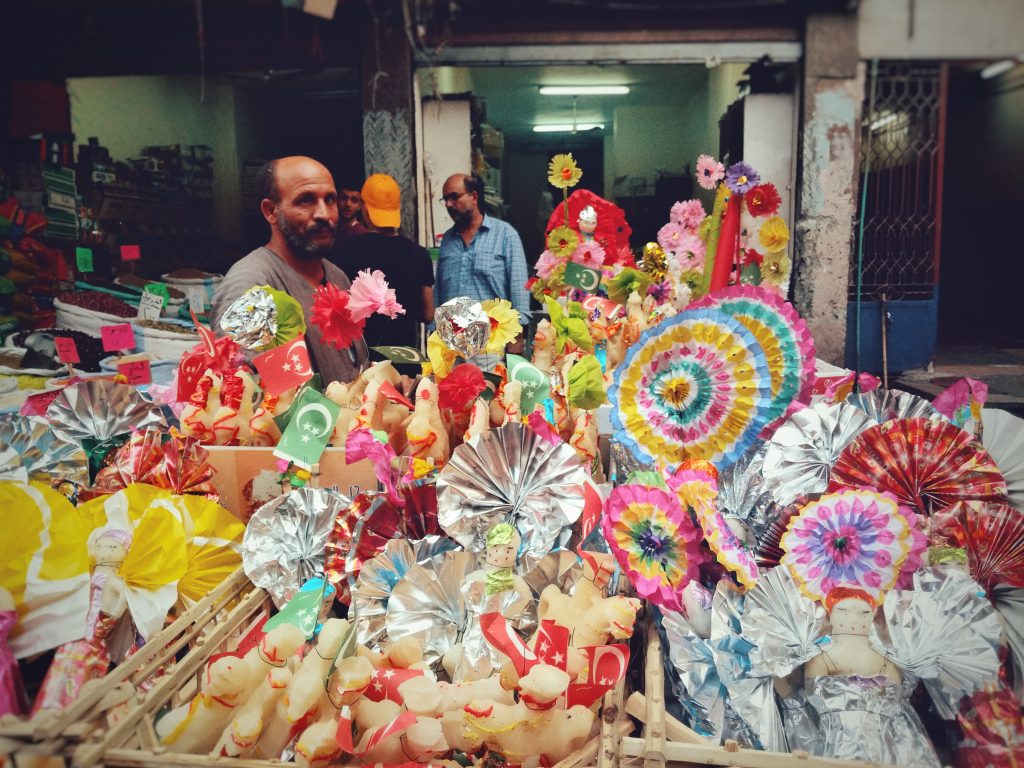
WE SAID THIS: Don’t Miss… Egypt’s Hajj Murals: A Tradition Worth Celebrating



